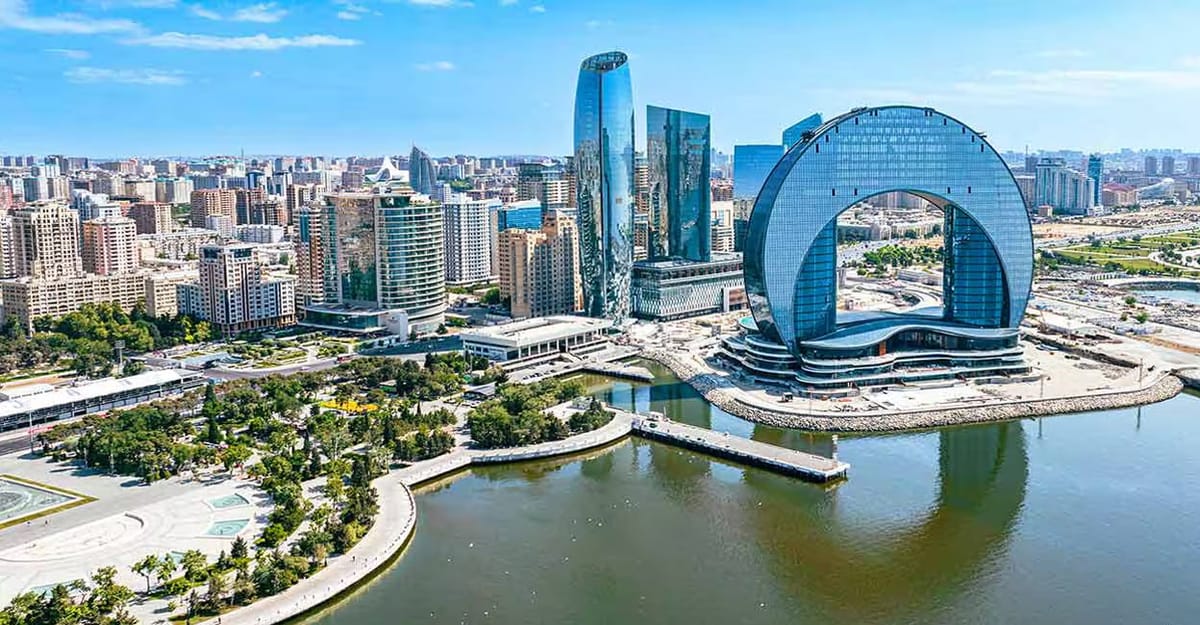Azerbaijan: A Land of Fire and Diversity

Azerbaijan, known as the "Land of Fire," is a country that bridges Eastern Europe and Western Asia, offering a fascinating blend of ancient history, diverse cultures, and modern development. From its bustling capital city of Baku to its serene countryside, Azerbaijan is a destination that captivates with its unique landscapes, rich cultural heritage, and dynamic progress.
Geography and Climate
Located on the crossroads of Europe and Asia, Azerbaijan is bordered by the Caspian Sea to the east, Russia to the north, Georgia to the northwest, Armenia to the west, and Iran to the south. The country's diverse geography includes the Caspian coastline, the Greater Caucasus mountain range, fertile plains, and semi-deserts.
Natural Beauty
- Caspian Sea: The world's largest inland body of water, the Caspian Sea is crucial for Azerbaijan's economy and offers beautiful coastal scenery and opportunities for water sports.
- Greater Caucasus Mountains: These mountains provide stunning landscapes, opportunities for hiking, and winter sports in regions like Gabala and Shahdag.
- Mud Volcanoes and Fire Mountains: Azerbaijan is famous for its mud volcanoes and the natural eternal flames of Yanar Dag, highlighting the country's geological uniqueness.
History and Cultural Heritage
Azerbaijan boasts a rich history that dates back to ancient civilizations, with influences from Zoroastrianism, Islam, and the Silk Road trade.
Historical Highlights
- Gobustan Rock Art Cultural Landscape: This UNESCO World Heritage site features ancient petroglyphs dating back to 10,000 BC, depicting early human life in the region.
- Sheki: Known for its historic architecture, Sheki is home to the beautifully preserved Sheki Khan's Palace, adorned with intricate stained glass windows.
- Baku's Old City (Icherisheher): This UNESCO-listed historic core of Baku includes the Maiden Tower and the Palace of the Shirvanshahs, showcasing medieval architecture and the city’s rich history.
Cultural Tapestry
- Carpet Weaving: Azerbaijani carpets are renowned for their intricate designs and craftsmanship. The Azerbaijan Carpet Museum in Baku showcases a vast collection of these traditional artworks.
- Music and Dance: Traditional Azerbaijani music features the mugham, a complex form of folk music, and dances that reflect the cultural diversity of the region.
Modern Azerbaijan
Azerbaijan has rapidly modernized over the past few decades, particularly in its capital, Baku, which has transformed into a vibrant metropolis.
Baku: The Capital City
- Flame Towers: These iconic skyscrapers symbolize modern Baku and are illuminated at night to resemble flickering flames, reflecting the country's "Land of Fire" moniker.
- Heydar Aliyev Center: Designed by renowned architect Zaha Hadid, this futuristic building is a cultural center that hosts exhibitions and events, symbolizing modern Azerbaijani architecture.
- Baku Boulevard: Stretching along the Caspian Sea, this promenade offers scenic views, parks, entertainment venues, and a glimpse into the city's contemporary lifestyle.
Economic Development
- Oil and Gas Industry: Azerbaijan's economy has been significantly boosted by its rich oil and gas reserves. The country is a key player in the global energy market, with pipelines like the Baku-Tbilisi-Ceyhan pipeline facilitating exports.
- Diversification Efforts: To reduce dependence on hydrocarbons, Azerbaijan is investing in sectors like tourism, agriculture, and technology, aiming for sustainable economic growth.
Cuisine
Azerbaijani cuisine is a rich tapestry of flavors, influenced by its diverse geography and cultural interactions.
Signature Dishes
- Plov: A traditional rice dish cooked with saffron, herbs, and various meats or dried fruits, often served during special occasions.
- Dolma: Grape leaves stuffed with spiced meat and rice, showcasing the region's agricultural bounty.
- Kebabs and Grills: Meat, fish, and vegetables are often skewered and grilled, reflecting the culinary traditions of the Caucasus.
Sweet Treats
- Baklava: Layers of pastry filled with nuts and sweetened with honey or syrup, a popular dessert during festivals and celebrations.
- Shekerbura: Crescent-shaped pastries filled with ground nuts and sugar, often prepared during the Novruz holiday.
Tourism and Travel
Azerbaijan is an emerging tourist destination, offering a blend of natural beauty, historical sites, and modern attractions.
Tourist Attractions
- Gobustan National Park: Known for its ancient rock carvings and mud volcanoes, this site is a must-visit for history and nature enthusiasts.
- Naftalan: Famous for its therapeutic crude oil baths, Naftalan is a unique destination for wellness tourism.
- Nabran: A popular resort area on the Caspian Sea, offering beaches, forests, and a range of recreational activities.
Practical Information
- Visa Requirements: Azerbaijan offers an e-visa system for travelers from many countries, simplifying the entry process.
- Best Time to Visit: The best time to visit is during spring (April to June) and autumn (September to October), when the weather is mild and pleasant.
Conclusion
Azerbaijan is a country of contrasts, where ancient traditions meet modern innovations, and natural landscapes coexist with urban sophistication. Whether you are exploring the historical alleys of Baku, marveling at the natural wonders, or savoring the diverse cuisine, Azerbaijan promises a unique and enriching experience. As it continues to develop and open up to the world, this Land of Fire is set to become an increasingly popular destination for travelers seeking adventure, culture, and new horizons.



